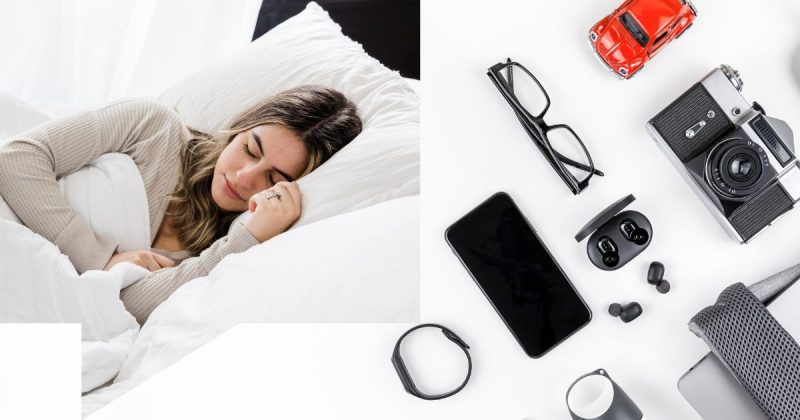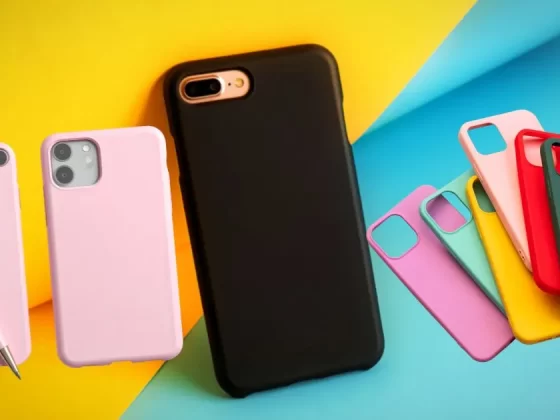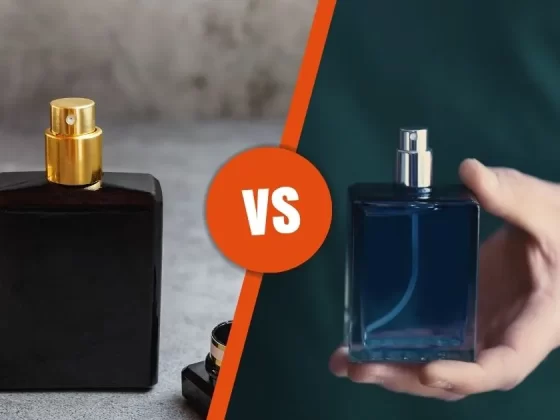Going to bed hopeful and waking up uncertain creates a familiar gap between intention and actual rest. Sleep-tracking gadgets aim to transform sleep into measurable data, capturing depth, movement, wake times, and recovery patterns. With countless devices available, the challenge lies in identifying which offer reliable, meaningful insights.
Here’s a guide to sleep-tracking gadgets that actually work, what to look for when shopping, and real-world examples worth considering.
How Sleep Tracking Works and Its Limits
Before diving into specific devices, it helps to understand how sleep trackers generally work and where they fall short. Most consumer trackers rely on a combination of motion and physiological signals, such as heart rate. Based on these inputs, they try to infer your sleep and wake times and even estimate sleep stages, such as light, deep, and REM.
It’s important to note that these devices are not medical-grade. The gold standard for sleep measurement is polysomnography, which tracks brain waves, eye movements, oxygen levels, breathing, and more. Sleep trackers are less precise. They can generally distinguish sleep versus wakefulness reasonably well, but they are less reliable when estimating sleep stages or the exact time you fall asleep.
In short, these gadgets are excellent for observing trends, providing feedback, and helping build better habits. They should be used for insight rather than as a medical diagnostic tool.
What Makes a Good Sleep-Tracking Gadget
Here are the qualities that make a sleep tracker genuinely helpful:
- Comfort- A device should be lightweight and unobtrusive. If it is uncomfortable, you won’t want to wear it to bed. Soft straps, minimal bulk, or even non-wearable designs can improve user experience.
- Battery Life- Nighttime tracking requires a battery that lasts multiple nights. Devices that require daily charging can be inconvenient and undermine consistency in monitoring.
- Meaningful Metrics- A good tracker provides more than just the number of hours slept. Look for sleep stages, heart rate variability, respiration, temperature, or a comprehensive sleep score.
- App Experience- Syncing with a robust mobile app is essential. The app should provide insights, trends, and actionable recommendations to help improve sleep.
- Reliability- Sensors must deliver consistent results so your nightly data reflects real patterns. While perfection is not realistic, consistency is key.
- Form Factor- Consider whether you prefer a wearable or a contact-free solution. Some users dislike anything on their body at night, which makes under-mattress or bedside devices appealing.
Sleep Trackers That Actually Work
Here are several sleep-tracking gadgets across different form factors, with real strengths and trade-offs:
Garmin Index Sleep Monitor
Garmin’s dedicated sleep tracker is designed for nighttime wear only. It is a lightweight armband worn on the upper arm, making it comfortable for many users. It tracks sleep stages, resting heart rate, heart rate variability, skin temperature, and breathing variations. The accompanying app provides a sleep score, recovery metrics, and time-based trends.
Pros: Comfortable, long battery life, smart vibration-based alarm, and washable band.
Trade-offs: No display or watch functions; occasional sync issues with Garmin watches.
Ultrahuman Ring AIR
This sleek smart ring tracks heart rate, temperature, movement, and more to provide detailed insights into recovery and sleep. The app gives a daily recovery score and trends over time.
Pros: Minimalist design, comprehensive recovery metrics, lightweight.
Trade-offs: Subscription required for full features; moderate battery life.
Luna Smart Ring
The Luna ring tracks sleep, heart rate variability, and activity without a mandatory subscription. Its simplicity and subtle design appeal to users seeking fundamental but reliable sleep insights.
Pros: No recurring costs, solid sleep metrics, decent battery life.
Trade-offs: Fewer sensors and insights compared to premium rings.
Beautyrest Sleeptracker Monitor
A non-wearable tracker, this device goes under your mattress or bed frame and monitors movement, breathing, and sleep cycles.
Pros: Contact-free, ideal for those who dislike wearable devices.
Trade-offs: Less detailed metrics than wearables; may not track heart rate variability or temperature.
SleepDot B501 Sleep Monitor
This small device clips to your sheet or pillow. It provides a basic overview of sleep duration, quality, and wake times.
Pros: Affordable, discreet, simple feedback.
Trade-offs: Limited advanced metrics; less detailed data analysis.
WHOOP 5.0 Strap
Built for performance and recovery, this strap tracks strain, sleep stages, heart rate variability, and recovery. It does not have a screen and is meant to be worn continuously.
Pros: Advanced sleep and recovery insights, very refined for performance.
Trade-offs: Membership required; may be overkill for casual users.
Budget Smart Ring
A low-cost ring that tracks movement and an introductory heart rate to estimate sleep duration and cycles.
Pros: Affordable, lightweight, minimalist.
Trade-offs: Less accurate and feature-rich than premium rings; fundamental data analysis.
Luna 2.0 AI Tracker
An advanced version of the Luna ring, this device tracks sleep, activity, stress, and recovery. It provides personalized suggestions to improve rest.
Pros: AI-powered insights, tailored recommendations, smart wake suggestions.
Trade-offs: Higher cost; requires consistent wear for maximum benefit.
Realistic Expectations for Sleep Trackers
Many people assume that simply using a sleep tracker will automatically improve their sleep. The truth is that these devices don’t work like magic; they provide data and insights that you can use to guide better habits. Understanding what trackers can and cannot do helps you set realistic expectations and get the most out of them.
What Sleep Trackers Can Help With
- Identifying patterns and trends: By tracking your sleep over days, weeks, or months, you can see how your habits, routines, and environment affect your sleep.
- Feedback on sleep quality: Beyond just counting hours, trackers can give you insight into light, deep, and REM sleep, helping you understand how restorative your rest is.
![]()
- Recovery metrics and lifestyle correlations: Some devices monitor heart rate, movement, or stress levels, allowing you to connect your sleep quality with factors like exercise, diet, or alcohol consumption.
- Motivating positive behaviour changes: Seeing your sleep trends can encourage adjustments like earlier bedtimes, reduced late-night screen use, or improved sleep environment.
What Sleep Trackers Cannot Do
- Diagnose medical conditions: Sleep trackers are not medical devices and cannot detect sleep disorders like apnea or insomnia with certainty.
- Replace clinical sleep studies: For serious sleep concerns, a professional sleep study is required for accurate diagnosis.
- Guarantee perfect accuracy: Sleep stages, exact sleep onset, and interruptions are estimated, not precisely measured.
Using the Data Wisely
Treat the information as guidance rather than a strict scorecard. Combining insights from your tracker with consistent sleep hygiene, regular bedtimes, limited evening screen exposure, and a comfortable, quiet sleep environment will produce the best results. Think of your tracker as a helpful coach: it won’t put you to sleep, but it can point you in the right direction for healthier, more restorative rest.
Tips for Choosing the Right Sleep Tracker
1. Form Factor: What Fits Your Lifestyle?
- Wearables (rings, wristbands, headbands): These trackers are worn on your body, so they capture detailed metrics such as heart rate, movement, and, sometimes, blood oxygen levels. They are great for those who want deep insights into sleep patterns. The downside is that some people find wearing a device at night uncomfortable.
- Under-mattress sensors or smart-mattress systems: These are contact-free and detect movement, breathing, and heart rate while you sleep. They are ideal for people who don’t like wearing devices. However, their data is limited to the bed where they are installed.
- Bedside devices (radar, camera-based): Placed near your bed, these track movement and breathing from a distance. They are unobtrusive, but accuracy can vary depending on placement and room setup.
2. Battery Life: Consistency Matters
- Wearables usually need recharging every few days, while under-mattress or bedside devices may be plugged in or have longer battery life.
- Longer battery life is beneficial if you travel frequently or have an irregular sleep schedule.
3. App Quality: Turning Data Into Insights
- A good app should clearly display your sleep metrics, showing not only total sleep but also stages like deep, light, and REM.
- It should provide actionable suggestions to improve your sleep habits and track long-term trends so you can identify patterns over weeks and months.
- Some apps integrate with broader health platforms, allowing you to see how sleep interacts with activity, nutrition, and overall wellness.
4. Subscription Costs: Know the Hidden Price
- Many trackers require a subscription to access advanced features, analytics, or personalized recommendations.
- Consider whether basic tracking without a subscription meets your needs or if the paid features are worth the ongoing cost.
5. Your Goals: Choose a Tracker That Matches Your Needs
- General sleep improvement: A simple wearable or under-mattress tracker may be enough.
- Performance tracking: Athletes or health enthusiasts may need advanced wearables that measure heart rate variability, sleep stages, and readiness scores.
- Health monitoring: Trackers that detect breathing disturbances or oxygen levels can provide useful trends, but they are not medical devices.
6. Validate with Personal Experience: Data Meets Reality
- Use your tracker alongside how you feel. If you wake up groggy despite a high sleep score, adjust your habits and see how it affects your sleep over time.
- Focus on trends rather than single nights; consistency matters more than individual scores.
- Remember, trackers approximate your sleep; they are tools to guide improvement, not exact diagnostic devices.
Resting on the Right Data
Sleep-tracking gadgets have advanced significantly in recent years. Today’s devices, from smart rings to straps to under-mattress monitors, can provide surprisingly detailed insights into your sleep patterns. The key is to use them as tools to observe trends and guide behaviour rather than expecting them to solve sleep problems overnight.
Try a tracker for several weeks to see patterns in your sleep. Make small behavioural adjustments based on the insights and focus on long-term habits. Over time, combining reliable data with consistent sleep hygiene can lead to better rest, more energy, and improved overall wellness. Sleep well and track smart.




